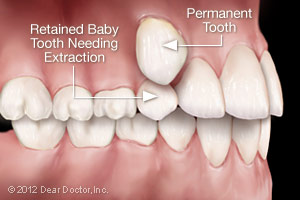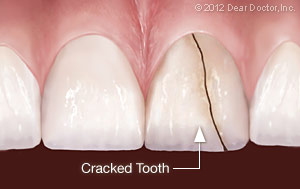
At Douglas B. Weber, D.D.S., we understand that having a complete, natural smile is key to feeling confident in your daily life. We also know that on occasion, circumstances may arise that require a patient to receive a routine or emergency tooth extraction in order to preserve overall oral health. As your Lancaster dentist, Dr. Douglas B. Weber knows that the decision to extract can be a difficult one, so he makes sure that every aspect of the procedure is as stress-free and comfortable for our patients as possible by keeping you well informed, aware of what is happening, and aware of what your choices are along the way.
When Is a Tooth Extraction Needed?
A tooth extraction is performed only after all alternatives have been considered and ruled out. Situations that may lead to an extraction include:
- Infection or risk of infection from decay (may require emergency tooth extraction)
- A tooth that is severely damaged from trauma (may require emergency tooth extraction)
- Impacted wisdom teeth (results in a wisdom tooth extraction)
- Overcrowded teeth (often requires orthodontic treatment)
What Is a Tooth Extraction?
A tooth extraction is a routine procedure for Dr. Douglas B. Weber, though in some instances, an emergency tooth extraction may be called for. The procedure includes:
- X-rays to assess the location, size, and position of the tooth to be removed to help determine the extent of the procedure
- An assessment of the anesthesia and sedation options that will best serve your needs, allowing for a pain-free, less-than-memorable experience
- The careful removal of the tooth, which often includes a bone-preserving graft
After the tooth has been removed, Dr. Douglas B. Weber will have you bite down on some gauze in order to help stop the bleeding, so that a blood clot can form.
Tooth Extraction Aftercare
After your extraction, your recovery typically takes a couple of days. The following tips will help you relieve discomfort and avoid complications.
- Take pain relievers as prescribed or recommended.
- Leave gauze in place for the recommended amount of time.
- Apply ice for 10 minutes at a time to minimize swelling after the procedure.
- Avoid rinsing, sucking, or spitting for six hours after the procedure.
- After six hours, rinse your mouth with ½ teaspoon of salt and warm water.
- Do not smoke.
- Eat soft foods the day after the extraction; gradually add solid foods as the extraction site heals.
- Avoid the extraction site when brushing your teeth.
When teeth must be removed, especially ones that appear in your smile, there are a number of natural-looking, permanent tooth-replacement options, such as implants, that can give your smile a second chance.
FAQ
Q. Are tooth extractions painful?
A. It is normal to experience some pain after the anesthetic wears off. There may also be some swelling and bleeding for up to 24 hours after the tooth extraction. If pain is severe or bleeding doesn’t stop, you should contact us immediately.
Q. What is dry socket?
A. On occasion, the blood clot that has formed in the socket breaks loose. This is referred to as dry socket.
Q. Will insurance cover tooth extractions?
A. Whether your tooth extraction or emergency tooth extraction is covered by your insurance depends on your provider. Our staff will help you find out if your extraction is covered and, if not, what additional financial solutions are available to you.


